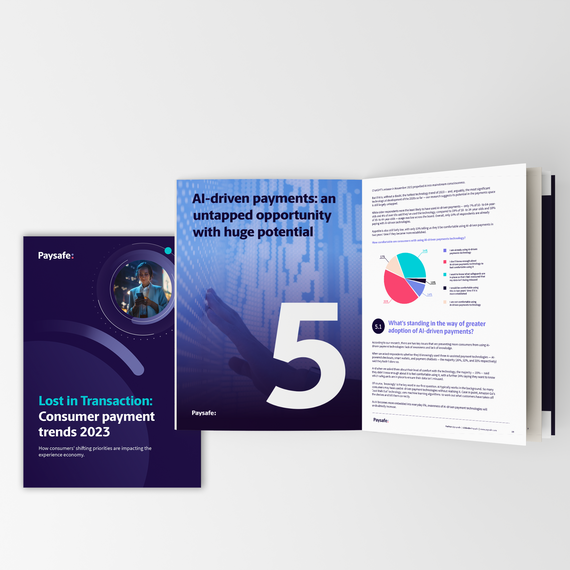
LiT: COVID-19 and the future of subscription payments
One impact of COVID-19 has been an increased reliance on subscriptions, for food, other goods, or entertainment services. But will we see this surge develop into long-term market growth?
COVID-19 continues to change the way in which we work, communicate and navigate the ins and outs of our daily lives. One impact on consumer trends has been a growing reliance on subscription services; whether for entertainment, nourishment, education, or even access to reliable news media, the global for appetite for these types of services is evolving.
To analyse how COVID-19 is changing consumer appetite for subscription-based services and what this may mean for eCommerce, Paysafe asked respondents across several key markets about their current adoption rates, expectations for the future and what they look for in these services. The responses were collected as part of Paysafe’s 2020 Lost in Transaction: How COVID-19 is impacting consumer payment trends research.
A strong future ahead
In appraising the global adoption of subscription services, it is important to first understand where engagement is most prevalent and to what extent those populations have embraced such offerings.
The US is the clear leader when it comes to adoption of subscription-based services, with 69% having multiple subscriptions and 28% having at least four (7% had at least six). Canada is the next highest of those included in the research with 50% having multiple subscriptions, followed by Germany (49%), the UK (47%) and Austria (45%). The figures are similarly noteworthy when looking at those with at least four subscriptions as Germany (12%), Canada (11%), Austria (11%) and the UK (10%) are all distant to the US.
How many subscription services, for either goods e.g. magazines or meal prep boxes such as Hello Fresh, or services e.g. Netflix, Spotify or Amazon Prime do you have currently?
An equally important stat shows that many of those adoption figures are poised to rise, with a significant portion of respondents likely to increase their subscriptions over the next 12 months. This is especially the case in Bulgaria where 45% do not currently have any subscriptions but 39% said they could see their personal tally increasing either slightly (10%) or significantly (29%).
Overall, 27% said they would increase their number of subscriptions, with the US (36%), Italy (25%), Canada (23%) and the UK (21%) all giving subscription providers further reason for optimism. Only 10% said their number of subscriptions were likely to decrease either slightly (6%) or significantly (5%).
How do you think this will be affected in the next 12 months?
Challenges into opportunities
As online businesses look convert the surge in subscription payments adoption into long term business growth, they need to maintain a commitment to understanding consumer expectations for convenience and value. If anything, these consumers are likely to be as demanding ever, as they continue to cope with a sustained upheaval to their daily lives due to COVID-19.
According to our data convenience is the main reason consumers prefer subscriptions; 53% of respondents find subscriptions to be a more convenient method of paying for goods or services than what they normally use. Only 15% disagreed with this sentiment. Comparable stats showed that 44% find subscriptions to be a better value than alternative options for a similar service or product, significantly outweighing the 16% who said they did not find it to be a better value. Businesses that lean into these beliefs by offering good value for money in a seamless manner will be the ultimate winners in the market.
But the reasons for consumers being turned off from subscriptions must also be addressed. Challenges faced by consumers when it comes to managing their subscriptions include not being able to keep track of how many they have and overpaying for those which they have stopped using and forgotten to cancel. Tracking the number of subscriptions is a concern for 34% of respondents, while 35% said they had overpaid for a subscription they no longer use.
However, overwhelmingly the largest concern stems from subscriptions being too difficult to cancel, with 46% agreeing that they find themselves being tied into frustrating long-term financial commitments. Only 26% did not find this to be an issue, suggesting significant room for improvement.
How many subscription services, for either goods e.g. magazines or meal prep boxes such as Hello Fresh, or services e.g. Netflix, Spotify or Amazon Prime do you have currently?
Openness to additional subscriptions was not limited to the young, however, as nearly every demographic saw the number of those expecting to increase subscriptions outpace those expecting them to decrease. Consumers aged 25-34 (35%) and 35-44 (37%) were comparably strong for those anticipating an increase.
The 65 and over group was the only demographic where more consumers anticipated a decline in their number of subscriptions. But even there, 9% still expect an increase in subscriptions, while the vast majority (81%) simply plan to remain at their current volume.
How do you think this will be affected in the next 12 months?
As subscription providers consider market strategies in the context of a COVID-19, they must also be mindful of what may follow once some measure of normalcy has been restored. While there is potential for short-term gains, an approach that truly values the nurturing of customer relationships and strives to optimise subscription payments, will be even better positioned for long-term success.
All data referenced is taken from our latest consumer research Lost in Transaction: The impact of COVID-19 on consumer payment trends. To compile this data Paysafe and Sapio Research surveyed 8,000 consumers across the US, UK, Canada, Bulgaria, Italy, Austria, and Germany between 8-15 April 2020.
The key takeaways from the research are available here.




